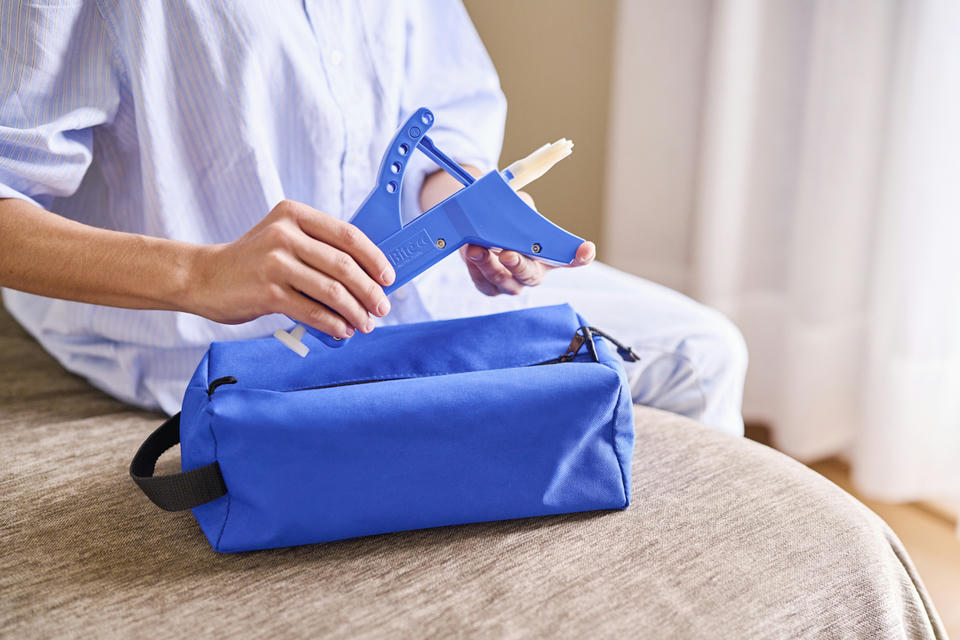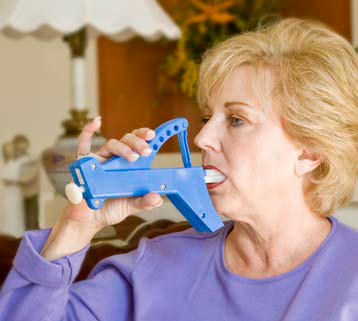What is trismus?
The lower jaw incorporates important muscles, joints and teeth vital for chewing, speaking, swallowing and making facial expressions. Reduced ability to open the mouth or pain when opening the mouth may be a sign of trismus. Trismus is a frequently overlooked but serious condition that may appear at any age and can progress slowly. Early detection and rehabilitation can help counter this restrictive condition and prevent sometimes costly complications which may compromise quality of life and health.
Who is affected?
Trismus can be divided into two types: one where the soft tissues or muscles are damaged and one where the bones or joints are affected. Possible causes of this condition include, but are not limited to, the following:
- Head and neck radiation
- Scarring resulting from head and neck surgery
- Complications from surgery
- Temporomandibular Joint Disorders (TMJD)
- Other muscle disorders
- Joint fixation (ankylosis)
- Joint inflammation (arthritis)
- Trauma (e.g., fractures)
- Stress-induced disorders
- (e.g., clenching and grinding of the teeth, bruxism)
- Stroke
- Burns
People suffering from trismus can be found within many clinical disciplines, including speech-language pathology, radiation oncology, maxillofacial surgery and prosthodontics, otolaryngology, physical therapy and dental surgery.
Why is trismus a problem?
Trismus can make it difficult to eat, speak, yawn, laugh or clean teeth. These difficulties can occur at a time when proper nutrition and oral hygiene are particularly important for recovery. The absence of joint movement can lead to inflammation, causing the joint to stiffen and gradually lose its function. If not treated promptly and properly, this hidden disability can seriously affect recovery, health and quality of life.
What can be done?
Trismus is unlikely to get better spontaneously. With the condition slowly worsening over time, it is important to start rehabilitation as soon as possible. If rehabilitation is delayed, trismus becomes more difficult to treat and reverse.
Studies show that stretching, combined with passive motion, is an effective way to improve jaw mobility. Passive motion nourishes the joint without activating painful muscles. The joint can also remain completely relaxed while an external force moves the jaw through its natural range of motion. Exercise with the TheraBite system provides both stretching and passive motion.
Rehabilitation for trismus focuses on stretching the damaged tissues. The expected rehabilitation outcome is an increased jaw opening of 1 – 1.5mm per week.

How do I know if I have trismus?
The average mouth opening in adults is around 45mm. Check with your clinician who can assess your mouth opening. The simplest way to screen for trismus is to insert three fingers between the upper and lower teeth or dentures. If this can be done without pain or discomfort, jaw mobility is most likely normal. If you can only manage one or two fingers, it could be that you have trismus.
For more precise measurements, the TheraBite Range of Motion Scale is an excellent tool that is easy to use.
How to cure the Trismus
It is possible to cure trismus thanks to the TheraBite Jaw Motion Rehabilitation System. It is a temporomandibular rehabilitation system that includes a device certified by numerous scientific studies that verify its effectiveness and results.
Its main functions:
- Maximize the range of motion of the jaw
- It nourishes joint tissues
- Heals and prevents stiffness and scar tissue
Using the device for a few minutes every day brings numerous benefits to the patient’s daily life.
